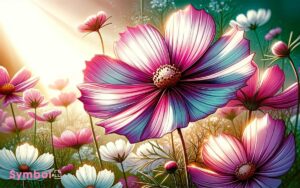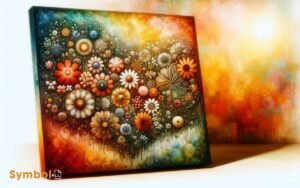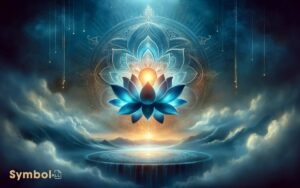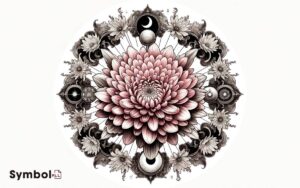Myrtle Flower Symbolism in the Great Gatsby: Love!
In ‘The Great Gatsby,’ your encounter with the myrtle flower isn’t coincidental; it epitomizes themes of love, immortality, and the raw pursuit of the American Dream.
The name Myrtle Wilson, intertwined with the flower’s symbolism of fertility and mortality, reveals profound layers to her character ambition mired in disillusionment and tragedy.
This flower, deeply rooted in cultural history, challenges its traditional purity symbolism, reflecting the novel’s critique of wealth and moral ambiguity. It’s a subtle nod to unattainable desires amidst societal decay.
Unraveling this symbolism offers you insights into Fitzgerald’s critique and the complexity of his characters. You’ll find the journey enriches your understanding of the narrative’s intricate tapestry.
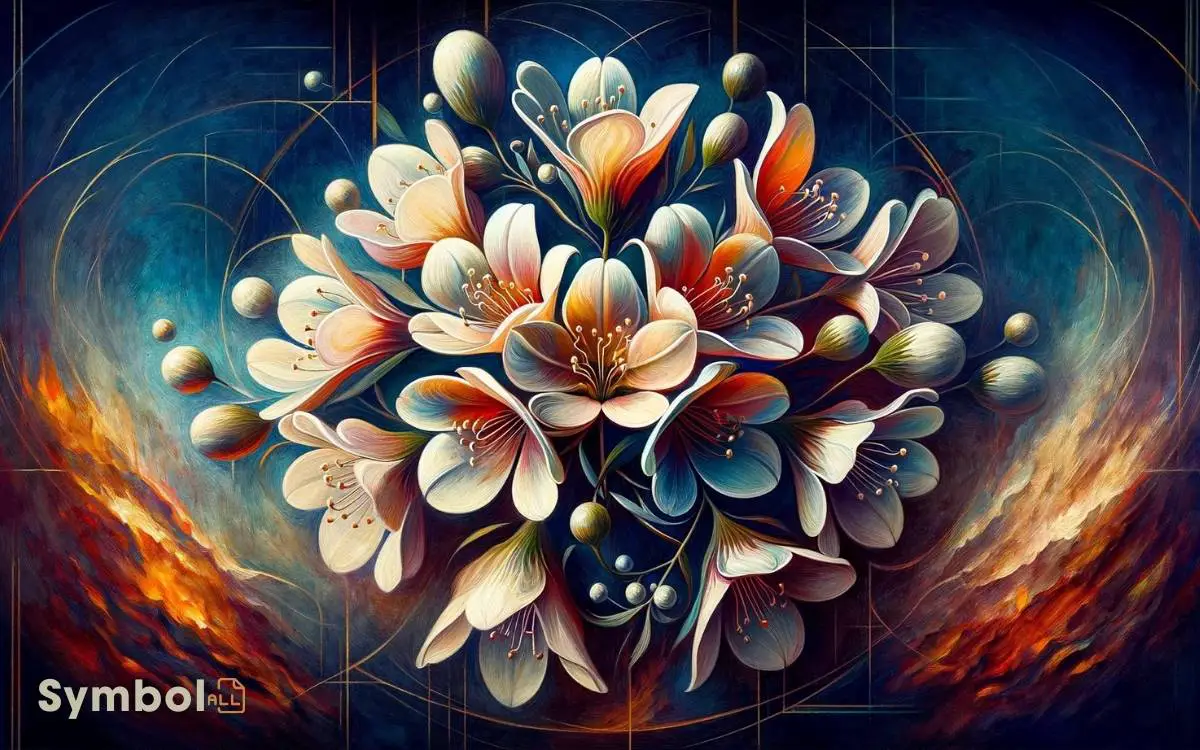
Key Takeaways
The Significance of Names
In F. Scott Fitzgerald’s ‘The Great Gatsby,’ the choice of the name Myrtle carries deep symbolic weight, reflecting themes of fertility, love, and even mortality, which intricately weave through the narrative’s fabric.
You’ll find that Myrtle Wilson‘s character is no mere happenstance but a deliberate decision to infuse the story with layers of meaning.
Her name, synonymous with the myrtle plant, traditionally symbolizes love and immortality, hinting at her desires and eventual fate.
However, the contrast between the myrtle’s symbolism and Myrtle Wilson’s tragic reality adds a poignant layer to the narrative.
It underscores the disparity between the characters’ aspirations and their actual circumstances, emphasizing the unattainable nature of the American Dream for some.
Myrtle Flower: A Brief Overview
Before you explore the intricate layers of symbolism in ‘The Great Gatsby,’ it’s important to understand the myrtle flower’s roots, its myriad symbolic meanings, and its cultural significance across civilizations.
You’ll find that this seemingly simple plant carries a wealth of connotations, from love and marriage to death and beyond, reflecting the complex characters and themes within the novel.
This brief overview sets the stage for a deeper appreciation of how Fitzgerald weaves the myrtle’s symbolism into his literary tapestry, enriching the narrative’s texture and depth.
Myrtle Flower: Origin
Delving into the origins of the myrtle flower reveals its deep-rooted significance in ancient cultures, where it was celebrated for both its beauty and symbolic meanings.
This exploration uncovers:
- The myrtle’s native habitat spans across the Mediterranean region and parts of Africa.
- Historically, it played a significant role in Greek and Roman ceremonies, hinting at its esteemed status.
- The plant’s association with Aphrodite, the goddess of love, underscores its connection to beauty and desire.
- In ancient Jewish tradition, the myrtle was a symbol of marriage and fertility.
- Its use in medicinal remedies by various cultures highlights a practical aspect alongside its ornamental value.
Understanding the myrtle flower’s origin enriches your appreciation of its complex symbolism in literature and beyond.
Symbolic Meanings
After exploring the myrtle flower‘s rich historical background, let’s examine its layered symbolic meanings. Traditionally, the myrtle flower symbolizes love and immortality, hinting at the timeless nature of genuine affection and the desire for an eternal bond.
In literature, it often represents purity and chastity, serving as a beacon of innocence amidst chaos. However, its presence in ‘The Great Gatsby‘ subtly challenges these connotations, weaving complexity into the narrative.
3You’ll notice that the myrtle’s symbolism isn’t just about surface-level beauty or love; it’s deeply intertwined with the characters’ longing for transcendence and escape from their realities.
This duality invites you to ponder the contrasts between appearance and reality, highlighting the flower’s role in enriching the thematic depth of the story.
Cultural Significance
While exploring the myrtle flower’s symbolism in literature provides insight, understanding its cultural significance across different societies adds a rich layer of meaning to its portrayal in ‘The Great Gatsby.’
- Ancient Greece: Myrtle was sacred to Aphrodite, symbolizing love and beauty.
- Victorian England: It represented marriages blessed with prosperity and happiness.
- Middle Eastern Cultures: Often associated with fertility and life, myrtle plays a role in various religious and cultural ceremonies.
- Roman Tradition: Myrtle crowns were given to heroes, signifying honor and valor.
- Modern Weddings: It’s still used in bouquets to symbolize the purity and love between the couple.
Analyzing these cultural significances, you’ll appreciate the depth of the myrtle flower’s representation in literature, offering a window into the values and beliefs of different societies.
Love and Desire
In F. Scott Fitzgerald’s ‘The Great Gatsby,’ the myrtle flower becomes a complex symbol intertwining love and desire, revealing the characters’ deep-seated yearnings and the illusory nature of their pursuits.
The myrtle, with its connotations of love and marriage, mirrors the characters’ quests for romantic fulfillment and societal acceptance. Yet, as you explore further, it also underscores the ephemeral and often unattainable nature of their desires.
The flower’s presence subtly hints at the characters’ internal conflicts between genuine affection and the longing for status or wealth through relationships.
This duality serves as a poignant reminder of the characters’ struggles to reconcile their dreams with reality, pushing you to reflect on the true essence of love and the often-blurred lines between heartfelt desire and societal expectation.
Tragedy and Death
The symbolism of the myrtle flower in ‘The Great Gatsby’ extends beyond love and desire, embodying the tragic undercurrents of death that permeate the narrative.
As you explore further into the text, you’ll notice how myrtle’s presence is subtly intertwined with moments of loss and despair:
- Myrtle Wilson’s death is a pivotal moment, linking her name to the flower’s symbolism.
- The flower’s beauty contrasts with the bleak reality of mortality.
- Scenes involving myrtle often foreshadow impending tragedy.
- Its perennial nature mocks the characters’ fleeting lives.
- The myrtle’s decay mirrors the disintegration of dreams and relationships.
This analysis reveals how Fitzgerald uses myrtle to underscore the inevitability of death, reminding readers that beneath the veneer of desire lies a deeper, more somber layer of truth.
The Elusive American Dream
Beyond the shadow of tragedy and death, the narrative of ‘The Great Gatsby’ also explores the depths of the elusive American Dream, revealing its complexities and contradictions.
You’ll see how Fitzgerald paints a vivid picture of a society chasing after wealth and status, believing these to be the ultimate indicators of success.
Yet, as you investigate further, you notice the dream’s hollow core for characters like Gatsby and Myrtle. Their relentless pursuit reflects a mirage of fulfillment that, in reality, leads to their downfall.
Through these characters, Fitzgerald critiques the dream’s attainability, suggesting it’s not a one-size-fits-all but varies based on one’s social standing and moral compromises.
Therefore, the American Dream, once a beacon of hope, becomes an unattainable fantasy, ensnaring those who dare to reach for it.
Color Symbolism in Gatsby
As you explore the vibrant tapestry of ‘The Great Gatsby’, you’ll find that color symbolism enriches the narrative, revealing deeper layers of theme and character.
Fitzgerald’s deliberate use of colors, particularly in Gatsby’s color palette and the iconic green light, serves as a visual lexicon for his critique of the American Dream.
These symbols not only paint a vivid picture of the era but also invite you to interpret the characters’ motivations and the societal values they embody.
Gatsbys Color Palette
Delving into Gatsby’s color palette reveals a tapestry of symbolism, each hue intricately tied to the novel’s themes and characters’ emotions.
- Gold and Yellow: Wealth, corruption, and the decay of the American Dream. Gold represents the true wealth of the old money elite, while yellow symbolizes its gaudy corruption, especially seen in Gatsby’s lavish parties.
- White: Innocence, purity, and moral ambiguity. Characters like Daisy often appear in white, embodying a deceptive facade of purity.
- Blue: Illusion, fantasy, and the unreachable. The color blue, particularly represented in Gatsby’s gardens and the eyes of T.J. Eckleburg, suggests a deep yearning for an unattainable dream.
- Grey: Desolation, decay, and the lifelessness of the Valley of Ashes. It signifies the moral bankruptcy and desolation underlying the glittering surface of high society.
- Red: Passion, violence, and death. This color foreshadows tragic events and represents the intense, often destructive, emotions driving the characters.
Green Lights Meaning
In F. Scott Fitzgerald’s ‘The Great Gatsby,’ the green light serves as a multifaceted symbol, embodying Gatsby’s endless pursuit of his idealized dream and the elusive nature of the American Dream itself.
This beacon, visible from Gatsby’s mansion, symbolizes the unattainable desires and aspirations that drive the novel’s characters.
It’s not just a physical object but a representation of hope, ambition, and the promise of fulfillment. Yet, the green light also illustrates the gap between reality and illusion, highlighting the inherent unreachability of these dreams.
As you explore further, you’ll see it’s a poignant reminder of the perpetual yearning for something just out of reach, hinting at the tragic undercurrents that define the pursuit of happiness in the American consciousness.
Myrtle Wilson: An Analysis
Peeling back the layers of Myrtle Wilson’s character reveals a complex figure entwined in desires for escapism and upward mobility, reflecting broader themes of ambition and disillusionment within ‘The Great Gatsby.’
- Ambition: Myrtle’s relentless pursuit of a better life illustrates her deep-seated yearning to transcend her socioeconomic status.
- Disillusionment: Despite her efforts, she remains trapped in a cycle of despair, highlighting the futility of her aspirations.
- Escapism: Her affair with Tom Buchanan serves as a temporary escape from her dreary life, showcasing her vulnerability and desperation.
- Socioeconomic Status: Myrtle’s situation underscores the rigid class divisions of the 1920s, illustrating how these barriers thwart personal ambitions.
- Tragic Flaw: Her tragic end emphasizes the perilous consequences of overreaching in a society governed by unattainable ideals and superficial values.
Floral Imagery in the Novel
As you explore the depths of ‘The Great Gatsby,’ you’ll notice a rich tapestry of floral imagery that weaves itself throughout the narrative, each flower carrying its own weight of symbolism.
The myrtle, in particular, reveals layers of meaning tied to Myrtle Wilson’s character and fate, offering insights into the novel’s intricate exploration of themes.
Unpacking the color symbolism further enhances our understanding of these floral motifs, shedding light on the characters’ intentions and the story’s underlying messages.
Symbolic Flowers in Narrative
Numerous symbolic flowers thread throughout ‘The Great Gatsby,’ each meticulously chosen to deepen the novel’s exploration of themes such as love, decay, and hope.
- Roses symbolize a traditional romantic love, yet with thorns hinting at pain and disillusionment.
- Daisies represent purity and innocence, particularly embodied by Daisy Buchanan, though her character suggests a tarnished purity.
- Orchids are often seen as exotic and luxurious, mirroring the opulence and decadence of the era.
- Tulips can symbolize a declaration of love but also the fragility of life and relationships within the story.
- Lavender evokes a sense of calm and tranquility, contrasting sharply with the novel’s underlying tension and unrest.
These flowers collectively enrich the narrative, offering you subtle insights into Fitzgerald’s complex characters and their turbulent world.
Myrtles Role Unveiled
Delving into the floral imagery of ‘The Great Gatsby,’ the myrtle emerges as a multifaceted symbol, intricately woven into the narrative to reflect themes of fertility, love, and even the illusion of success.
You’ll find the myrtle isn’t just a background detail; it’s a pivotal element that enriches the story’s texture, offering deeper insight into characters’ motivations and the societal critique embedded within the tale.
| Aspect | Significance |
|---|---|
| Fertility | Symbolizes the desire for growth, both personal and societal. |
| Love | Represents the complex nature of love, its beauty, and at times, its unattainability. |
| Illusion of Success | Suggests the superficial success characters chase, mirroring the American Dream’s elusive nature. |
Through this lens, you’re encouraged to look beyond the surface, understanding the myrtle’s role as not just an ornamental detail but as a critical commentary on the novel’s themes.
Color Symbolism Deciphered
In exploring the floral imagery of ‘The Great Gatsby,’ the nuanced use of color symbolism reveals deeper layers of meaning, inviting you to ponder how hues contribute to the narrative’s emotional and thematic depth.
Consider the implications of each color:
- Green: Symbolizes hope and the elusive nature of the American Dream, embodied in Gatsby’s yearning for Daisy.
- Yellow: Represents decay and corruption beneath the surface of wealth and glamour, often seen in the golden objects surrounding Daisy.
- White: Conveys purity and innocence, yet ironically, it masks the characters’ true intentions and moral ambiguities.
- Blue: Suggests tranquility and illusion, mirroring Gatsby’s romanticized perception of his past with Daisy.
- Red: Denotes passion and violence, foreshadowing the tragic events that unfold.
These colors interweave to form a rich tapestry, enhancing your understanding of the novel’s complex themes.
The Myrtle and the Valley of Ashes
The myrtle, often symbolizing love and immortality, contrasts sharply with the desolation and decay of the Valley of Ashes in ‘The Great Gatsby.’
This striking juxtaposition illuminates the profound disparity between the novel’s themes of enduring beauty and the harsh reality of societal decay.
The Valley of Ashes, representing the moral and social degradation of the era, starkly opposes the myrtle’s connotations of enduring love.
This disparity serves as a poignant critique of the American Dream, suggesting that the pursuit of material wealth often leads to spiritual barrenness.
You’re invited to ponder the irony of the myrtle’s liveliness amidst the desolation, symbolizing perhaps a glimmer of hope or a mocking reminder of what’s lost in the pursuit of hollow ambitions.
Symbols of Wealth and Status
While the myrtle’s symbolism offers a critique on the emptiness of material pursuits, it’s also imperative to examine how symbols of wealth and status manifest throughout ‘The Great Gatsby,’ further exploring the novel’s commentary on societal values.
You’ll notice:
- Gatsby’s mansion: A demonstration to his wealth and his desire to impress Daisy.
- The lavish parties: Symbolizing Gatsby’s extravagant lifestyle and social standing.
- The green light: Represents Gatsby’s aspiration and the American Dream.
- Daisy herself: A symbol of ultimate status and wealth that Gatsby yearns for.
- The Valley of Ashes: Contrasts the opulence of the characters, highlighting the socioeconomic disparities.
These symbols collectively critique the pursuit of wealth and status, revealing the moral vacuity of such desires.
Contrasts and Contradictions
Delving into the narrative of ‘The Great Gatsby,’ you’ll uncover a rich tapestry of contrasts and contradictions that underscore the novel’s exploration of the American Dream’s complexities.
Fitzgerald masterfully juxtaposes the glittering opulence of Gatsby’s parties with the desolate wasteland of the Valley of Ashes, revealing the stark disparities between wealth and poverty.
This duality not only highlights the illusion of the American Dream but also reflects the characters’ internal conflicts. For instance, Gatsby’s lavish lifestyle belies his unfulfilled longing for Daisy’s love, showcasing the contradiction between material wealth and emotional fulfillment.
Similarly, the superficiality of the East Egg elite contrasts with Gatsby’s genuine affection for Daisy, underscoring the deep-seated moral corruption beneath the era’s glamorous veneer.
Unpacking Fitzgeralds Metaphors
Exploring Fitzgerald’s use of metaphors, it becomes evident how deeply these literary devices enrich the thematic layers of ‘The Great Gatsby,’ offering a more nuanced understanding of its characters and their societal context.
- The green light: Symbolizes Gatsby’s unattainable dreams and the American Dream’s elusive nature.
- The Valley of Ashes: Represents the moral decay hidden beneath society’s glamorous facade.
- The eyes of Doctor T.J. Eckleburg: Act as an omnipresent moral judge, overseeing the characters’ actions.
- Gatsby’s mansion: Embodies his desire for acceptance and his obsession with recapturing the past.
- The weather: Mirrors the emotional and narrative climate, setting the tone for key events.
These metaphors don’t just decorate the narrative; they’re integral to understanding the complex interplay between characters, their desires, and the society they navigate.
Conclusion
In your journey through the verdant symbolism of the myrtle flower in ‘The Great Gatsby,’ you’ve traversed the landscapes of longing, brushed against the thorns of tragedy, and glimpsed the shimmering facade of prosperity.
This modest bloom, nestled within Fitzgerald’s narrative, blossoms into a poignant emblem of the dreams that both enliven and ensnare our souls. It whispers of love’s fleeting beauty and the stark reality of aspirations wilted in the harsh sunlight of disillusionment.
Through it, Fitzgerald skillfully reveals the core of human yearning and the inevitable dance with destiny.


